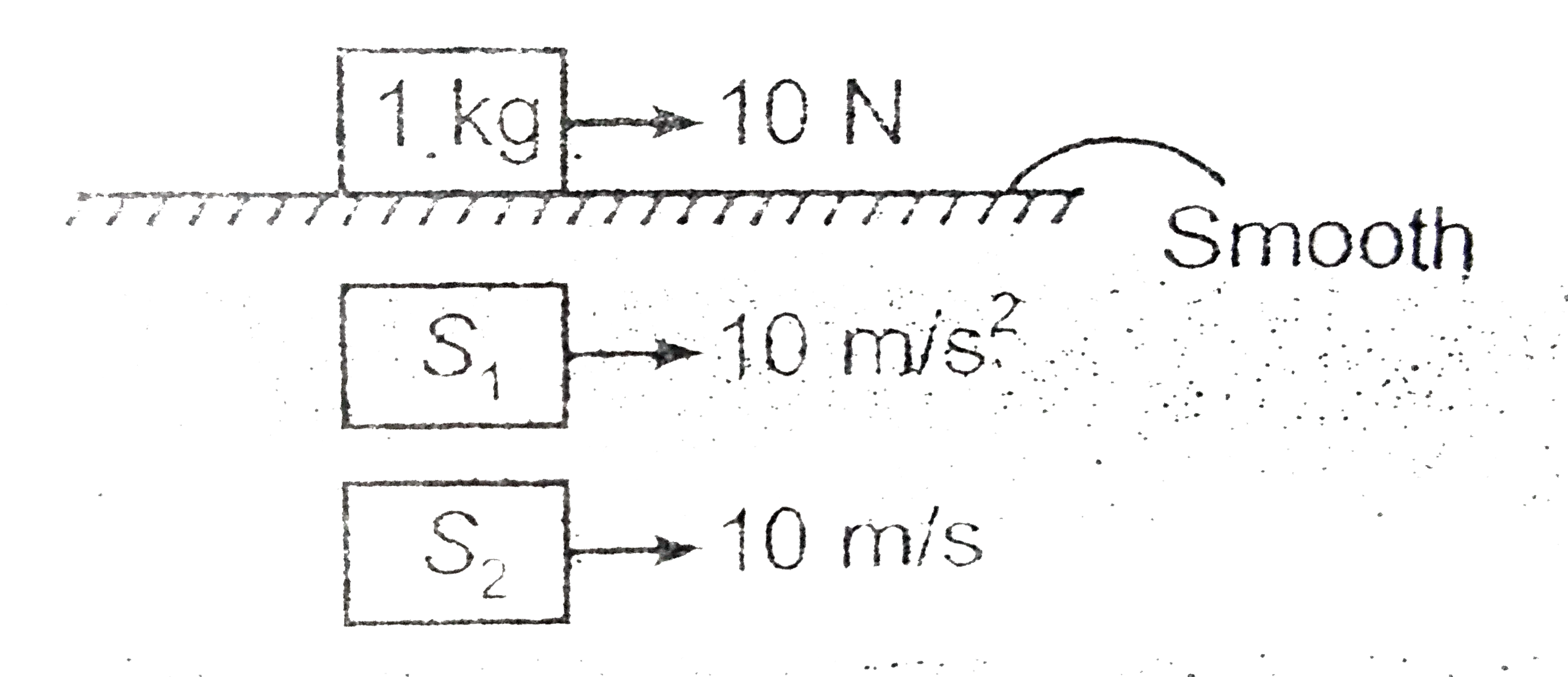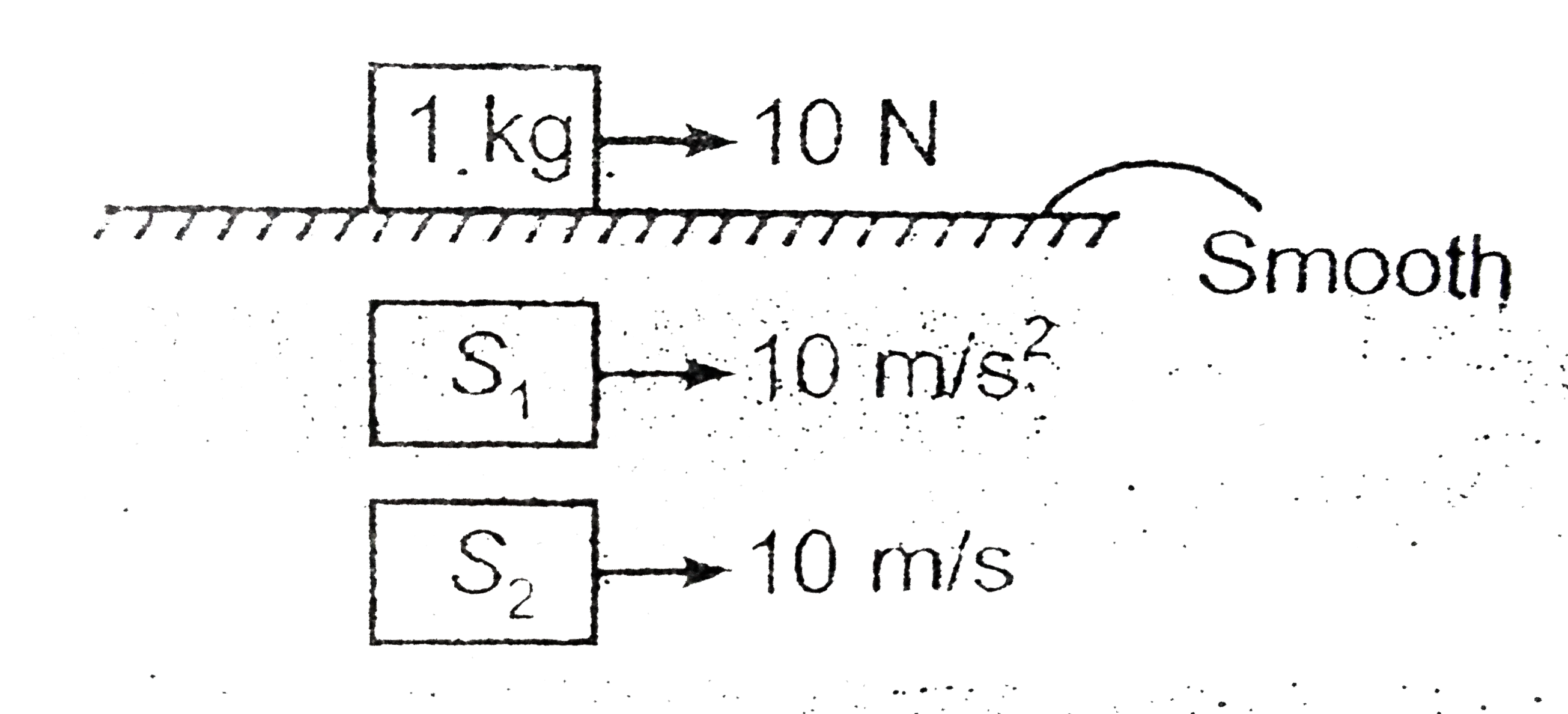The accleration of a particle as seen from two frames S1 and S2 have equal magnitudes 4 m/s2
The frames must be at rest with respect to each other.
The frames may be moves with respect to each other but neigther should be accelerates with respect to the other.
The acceleration of S2 with respect to S1 may either be zero or 8 m/s^2.
The acceleration of S2 with respect to S1 may be anything between zero and 8ms2
The correct Answer is:D
Step by step video, text & image solution for The accleration of a particle as seen from two frames S_(1) and S_(2) have equal magnitudes 4 m//s^(2) by Physics experts to help you in doubts & scoring excellent marks in Class 11 exams.
Updated on:21/07/2023Topper's Solved these Questions
- REST AND MOTION : KINEMATICSBOOK - HC VERMACHAPTER - REST AND MOTION : KINEMATICSEXERCISE - Exercises
51 Videos
- REST AND MOTION : KINEMATICSBOOK - HC VERMACHAPTER - REST AND MOTION : KINEMATICSEXERCISE - Objective 1
13 Videos
- PHYSICS AND MATHEMATICSBOOK - HC VERMACHAPTER - PHYSICS AND MATHEMATICSEXERCISE - Exercises
34 Videos
- ROTATIONAL MECHANICSBOOK - HC VERMACHAPTER - ROTATIONAL MECHANICSEXERCISE - Exercises
86 Videos
Similar Questions
Acceleration of a particle as seen from two reference frames 1 and 2 has magnitude 3m/s2 and 4m/s2 respectively. What can be magnitude of acceleration of frame 2 with respect to frame 1?
View SolutionVelocity and acceleration of a particle are v=(2ˆi−4ˆj)ms and a=(−2ˆi+4ˆj)ms2 Which type of motion is this?
View Solution
Knowledge Check
The magnitude of acceleration of a particle as seen by observer A is a m/s2and that observed by Bis b m/s2. If magnitude of acceleration of A with respect to B is x m/s2 then indicate the correct statements is :
A∣∣a2−b2∣∣≤x≤∣∣a2+b2∣∣B|a−b|≤x≤|a+b|C|a−b|<x<|a+b|D0≤x≤|a−b|orx≥|a+b|Statement I: A particle is found to be a rest when seen from a frame S1 and moving with a constant velocity when seen from another frame S2. We can say both the frames are inertial.
Statement II: All frames moving uniformly with respect to an inertial frame are themselves inertial.AStatement I is true, statement II is true, Statement II is the correct explanation for statement I.BStatemet I is true, Statement II is true , Statement II is NOT the correct explanation for Statement ICStatement I is True, Statement II is False.DStatement I is False, Statement II is trueIn S.H.M., the velocity of the particle at the mean position is 1 m/s and acceleration at the extremity is 2m/s2, the period of motion is
A2 sB0.5 sC1 sD3.142 s
A particle is found to be at rest when seen from a frame S1 and moving with a constant velocity when seen from another frame S2. Select the possible options :
View SolutionTwo sources S1 and S2 separated 2.0 m, vibrate according to equation y1=0.03sinπt and y2=0.02sinπt where y1,y2 and t are in M.K.S unit. They send out waves of velocity 1.5 m/s. Calculate the amplitude of the resultant motion of the particle co-linear with S1 and S2 and located at a point to the left of S1.
View SolutionA constatnt force of 10 N act on a block as shown in figure intal velocity of the particle is zero. It is observed from three frames of reference S1,S2 and ground. The frame S1 start from rest and move with constnat acceleration 10m/s. The frames S1andS2 and particle start moving simultaneously at t=0.

Net work done on block in 1 s as observed from frame S2 is
View SolutionA constatnt force of 10 N act on a block as shown in figure intal velocity of the particle is zero. It is observed from three frames of reference S1,S2 and ground. The frame S1 start from rest and move with constnat acceleration 10m/s. The frames S1andS2 and particle start moving simultaneously at t=0.

Work done on block in 1 s as observed from frame S1 is
View SolutionA particle is observed from two frames S1andS2. The frame S2 moves with respect to S1 with an acceleration a. Let F1andF2 be the pseudo forces on the particle when seen from S1andS2 respectively. Which of the following are not possible ?
View Solution
